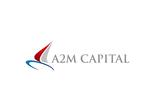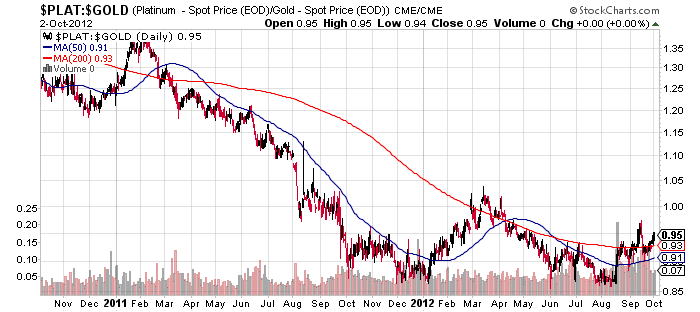 Author: Michael Arold
Author: Michael Arold
Covestor model: Technical Swing
Disclosure at time of writing: Long DGP, SKF; Short EWI, LOW, FSLR
August turned out to be a good month for the Covestor model portfolio. At the end of July, it became clear that the markets were not fully discounting a potential weakening of the global economy as well as the situation in Europe. I therefore started the month mostly in cash and took various trades on the short side when negative price momentum accelerated.
Price patterns in July and August reminded me of the financial crisis of 2008: high correlation among individual stocks and sectors, news-driven price mechanisms and certain levels of investor sentiment were familiar. Of course, the economic situation was different, but the mechanics of trading these environments are comparable: one has to be fast in taking profits after strong price momentum moves because sudden snap-back rallies can eliminate gains. In such an environment it also makes sense to overweight ETFs as a trading vehicle because of the high correlation among individual stocks.
I’m not too optimistic
My overall outlook for the next months is not too positive. I believe that the markets will stay volatile, without a dominant direction. These environments can be challenging for inexperienced traders, but can also offer tremendous opportunities when a trader manages to adapt to the environment. For example, one wants to focus on so-called mean reversion trades instead of momentum plays and stay conservative with position sizing.
Two major themes dominate the markets at the beginning of September 2011: QE3 and Europe. The rally at the end of August has already been characterized by various commentators as a new version of the 2010 “Tepper Rally” (1). Last year around this time, hedge fund manager David Tepper correctly predicted a win-win scenario for stocks as a result of the QE2 announcement.
I do not believe that history will repeat itself this year. Markets tend to surprise the maximum number of investors and a QE3 based rally would be too obvious at this point. It is not my job as a trader to predict the economy (predicting the economy has nothing to do with predicting stock prices), but allow me to have a thought on QE3: I don’t think we will get it. Real annual inflation is about to hit 4% in the US (2), which will make additional accommodative Fed measures difficult to justify.
Regarding Europe, further economic integration is probably needed to solve the issues, but a European economic government or even taxes on the cross-European level won’t be accepted by citizens of the stronger countries. At least I, as a German citizen, will probably move back to the USA should I have to pay my taxes to Europe. Bottom line: there’s no solution in sight, which is putting pressure on European equities. Note that stocks of Germany and Italy have generally underperformed global equities so far this year (as of 9/1/11).
So why did US stocks rally at the end of August? Probably because of massive short covering: ZeroHedge recently commented on a study from Societe General: “Hedge funds have opened the biggest net short positions since early 2008, concentrated on the most liquid segment of the market, i.e. the S&P 500” (3). If short covering was indeed the reason for the latest rally, gains should be short-lived. We will find out in September, which by the way has a historically strong negative seasonal bias. (4)
I believe hope for more Fed intervention coupled with fear about Europe will create large price swings in stocks in the next months. I plan to take trades at the opposite side of the crowd, in an effort to benefit from the reversion to the mean: going short when the crowd becomes too optimistic and establishing long positions when the mood gets too depressed. These psychological swings can happen any day, so as usual we have to be open to any developments and stay nimble.
Positions as of September 1
Long DGP – a double leveraged Gold ETF that is likely to rise alongside the decline of major currencies that I believe will continue
Long SKF – double leveraged short Financial ETF. Unfortunately, US Financials might also come under pressure if the situation in Europe should continue to deteriorate.
Short EWI – Italy ETF; targeting the economic decline of a weak European economy. Italy is establishing various austerity measures, but we have seen in the case of Greece that austerity doesn’t help the economy (which should be obvious).
Short LOW – targeting the weak US housing market
Short FSLR – targeting weakness in the solar sector due to price pressure from China, over capacity, and global reduction in subsidies
Sources:
(1) “Daily State Of The Markets: Has The ‘Tepper Trade’ Returned?” David Moenning, Seeking Alpha 8/31/11 https://seekingalpha.com/article/290808-daily-state-of-the-markets-has-the-tepper-trade-returned
(2) MIT’s Billion Prices Project; US Daily Index as of 9/1/11 http://bpp.mit.edu/usa/
(3) “Downside Hedge Fund Bets On S&P500 Highest Since 2008” Tyler Durden, Zero Hedge, 8/24/11 http://www.zerohedge.com/news/downside-hedge-fund-bets-sp500-highest-2008
(4) “Wake Me Up When September Ends” Bespoke Investment Group, 8/31/11
http://www.bespokeinvest.com/thinkbig/2011/8/31/wake-me-up-when-september-ends.html



